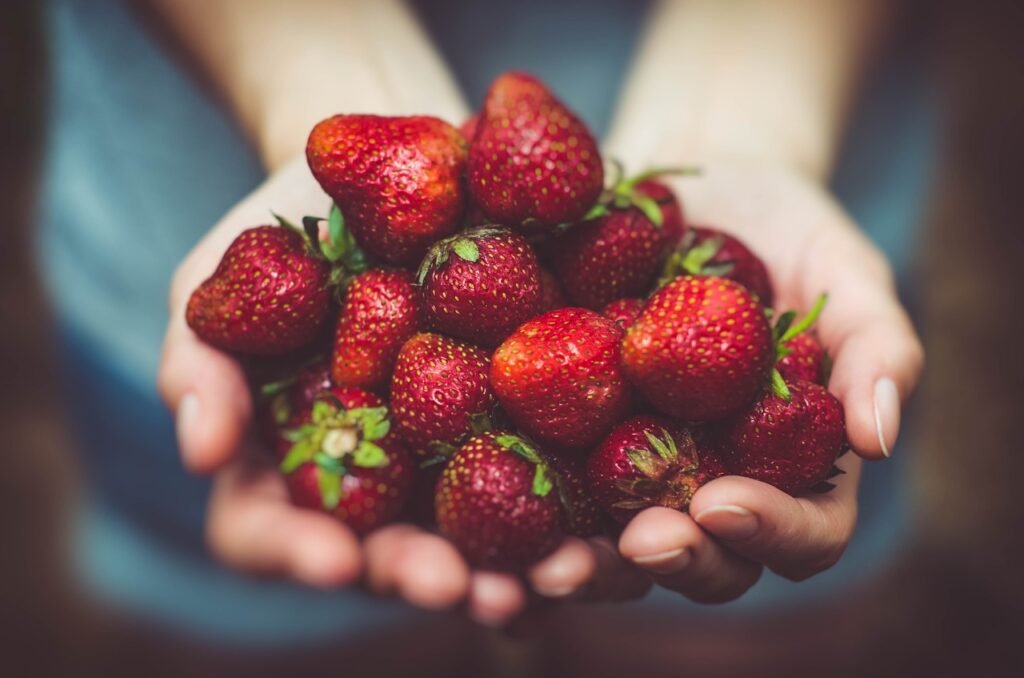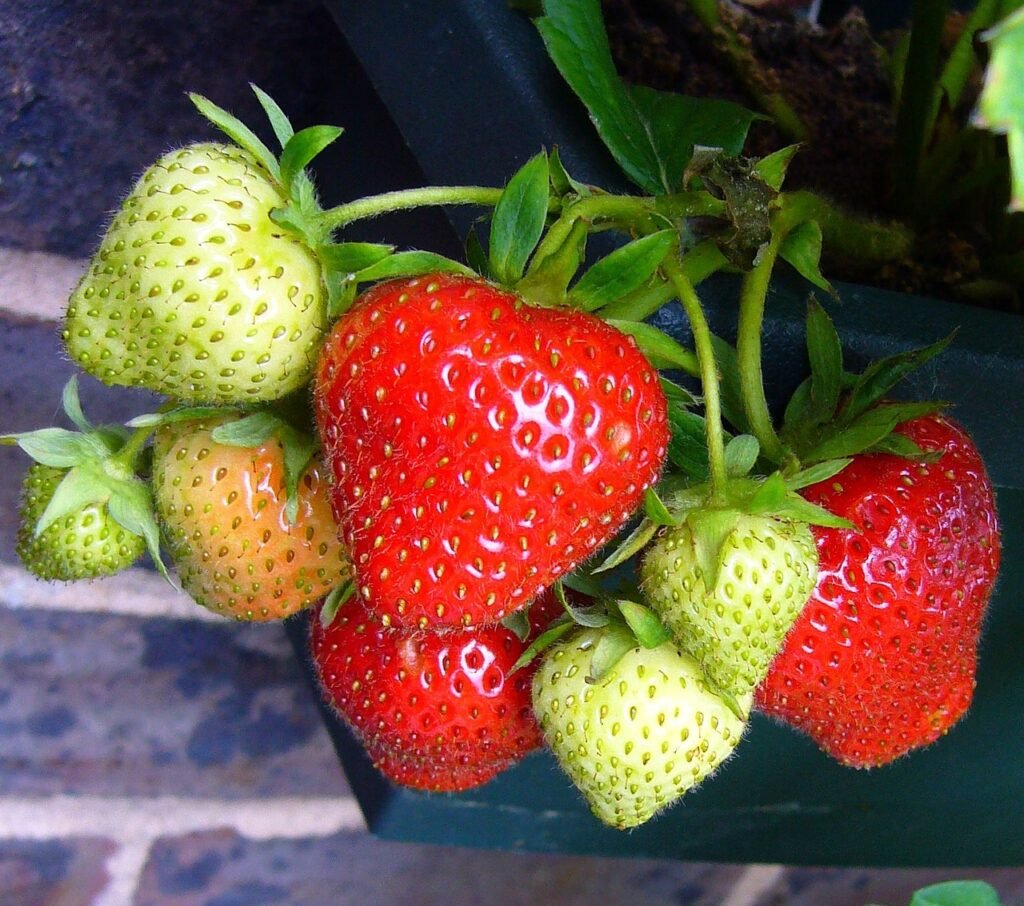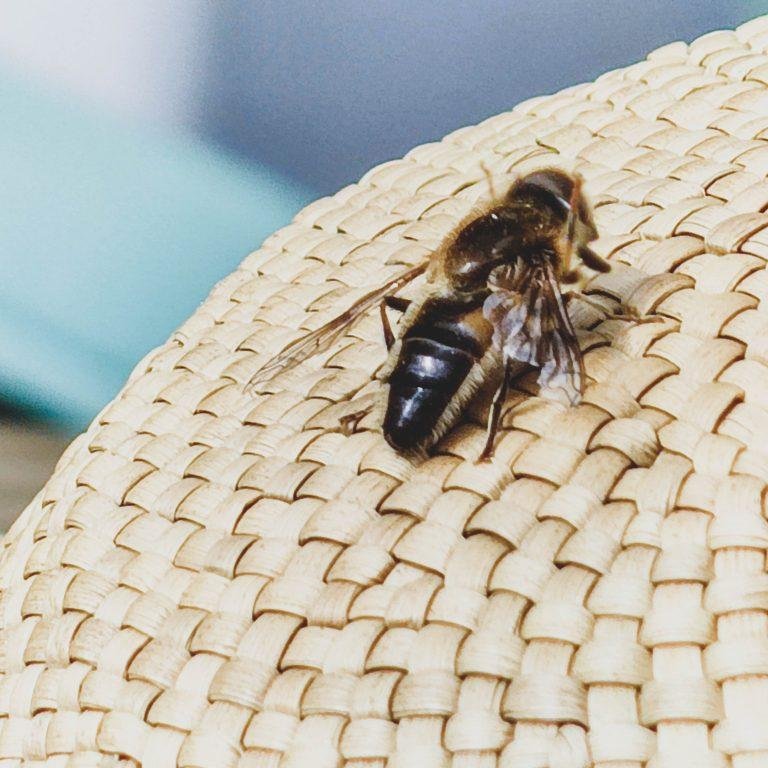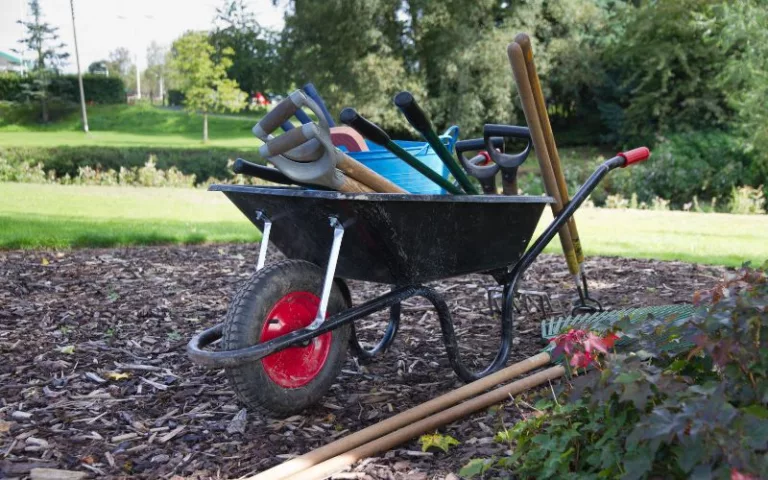Winter Strawberry Bliss: How to Grow Strawberries in a Cold Frame
Just a heads up, this post contains some affiliate links. That means that we earn a small commission if you buy the product at no extra cost to you. That allows us to continue to research and share interesting articles with you. :)
Here in the UK, we don’t have a lot of amazing sunshine, and when your favourite fruit in the world happens to be the Great British strawberry, that can be a big problem!

I love strawberries, but I’ve never been particularly good at growing them. Last year, I rescued a few sad-looking strawberry plants from one of my favourite discount shops, and I’m happy to report that they have actually lived through the winter!
In this article, I will show you exactly how I managed to overwinter strawberries in my garden.
As a general rule, you can overwinter strawberries and grow strawberries in a cold frame. During the coldest months, you’ll need to keep the plants warm by putting straw or something similar on top of them.
So, how do you overwinter strawberries in a cold frame? Let’s discuss this.
Why Should You Overwinter Strawberries
There are many benefits to overwintering strawberries in a cold frame. One of the most important things is that it can extend the strawberry season. This technique is useful for gardeners in colder climates, such as the UK.
Strawberry plants can survive the winter if they are put in a cold frame and covered with straw or hay to keep them warm. Strawberries are perennials; this means that they are not dependent on you for (too much) annual care and maintenance.
Strawberries are easy to grow, so this is an ideal way for new gardeners to get the idea of growing their own produce. If you want to add fruit to your diet but don’t want the hassle of growing it from seed yourself, you can start with strawberries.
They are also very pretty and make a wonderful addition to flower beds!
What Is A Cold Frame?
A “cold frame” is usually a lightweight, transparent box that protects plants from temperature fluctuations and exposure to the elements. They can be super useful for several reasons:
- Cold frames can be used indoors or outdoors.
- The cold frame is built indoors to allow light to enter and keep plants warm during winter.
- It’s usually made of wood, glass or plastic and comes in various shapes and sizes.
- Using cold frames give you control over how much sun your plants receive, creating a microclimate for plant growth.
Check out this Selections Polycarbonate Cold Frame if you want to build your own cold frame. It’s easy to assemble and perfect for protecting your strawberry plants during the winter. Alternatively, this video shows you how to make a cold frame out of old windows!
Growing Plants in a Cold Frame
A cold frame is an excellent way to grow strawberries and other plants throughout the winter.
This is because they offer protection from frost and wind, which can be particularly damaging to strawberry plants during this time of year. They can be built with a few simple materials and will provide protection from frost and wind.
A cold frame is a relatively small garden structure, a box without a bottom. They cost very little to make and can be easily constructed from recycled materials. All you need is a few sheets of glass or plastic, some wood, and some slats to support the glass.

Why Growing Strawberries in a Cold Frame is Beneficial
Strawberries are a delicious and nutritious fruit that can be grown in a cold frame.
Growing strawberries in a cold frame is beneficial because it allows you to grow them during the winter months, when they would otherwise not be able to grow. It also protects them from the elements, like wind and snow, which can damage the plants.
A cold frame is an excellent way to protect your plants from the harsh winter weather. They work by trapping heat inside and keeping it warm inside at night, while they allow sunlight to come through during the day.
This helps keep your plants warmer than they would be outside in colder temperatures while still giving them access to sunlight for photosynthesis, which is how they make their food.
Cold frames are not heated, so they don’t require additional heating as some greenhouses do. They also don’t need to be as large as greenhouses because they’re insulated and have less heat loss than an uninsulated structure.
Cold frames are usually built out of wood, but you can also use sheets of glass, plastic, or corrugated plastic siding. The basic idea is the same: a small box with an opening on top that allows sunlight to enter and heat to build up.
They’re pretty easy to make and don’t take long at all. Simply build your box, most people use one-story cold frames directly on the floor, but you can use shelves and ensure the top of your box can be propped open or can be removed.
The top should allow light to come through. Some gardeners prefer the sides of their cold frame to let light in, but this isn’t always necessary.
How to Set Up and Grow Strawberries In A Cold Frame
To get started growing your strawberries, be sure to grab some high-quality strawberry plants. These plants are perfect for overwintering in a cold frame.
Once your cold frame is built, place your strawberry plants inside (usually planted in pots or troughs for easy moving) and cover the plants with loose straw or hay during the winter months.
You will need to water your plants, but don’t water too much over the winter, just enough to keep them moist.
This is a great option if you want to grow strawberries in a cold frame in your backyard or garden over the winter
Don’t forget the insulation! Make sure to use plenty of straw mulch to keep your strawberry plants warm during the coldest months. You can find some “Strulch Mulch” Natural Straw Mulch for Gardens” through this link.
Strawberry Plant Care
Strawberries are a delicious and nutritious fruit that can be grown in the backyard, on a balcony or even indoors.
The strawberry plant is a perennial that grows best in spring and summer.
To grow strawberries in a cold frame, prepare the soil by adding manure, compost, or your preferred fertiliser. Then, plant the strawberry plants about 2 feet apart and keep them well watered for best results.
To care for strawberry plants, you should water them regularly during dry periods (once every three days) and fertilize the soil with compost once a month.
Strawberries grow well in pots and troughs, which makes container gardening easier. You can grow strawberries in a cold frame during the winter and move them outside into the sunshine during the summer.
You can harvest strawberries when they are fully ripe and preserve any gluts you may have.
Gardening can be tough on the hands, so make sure to have the right tools for the job. Check out these gardening gloves. Niki has a pair of pink ones (obviously!), but they do come in a range of colours, and they have a waterproof covering on the palm to protect and keep your hands dry. They also fit nicely and snugly, helping you to keep your dexterity a must-have for any gardener!

Related Questions
How Cold Is Too Cold For Strawberries?
Strawberry plants grow best when the temperature is between 18° C (65° F) and 29° C (75° F).
If you live in a cold climate, you might want to overwinter strawberries in a cold frame to extend your harvest season and build hardier plants.
When overwintered properly, most strawberry plants will survive down to -5° C (22° F), but they will only survive under cover and won’t produce fruit at that temperature.
Will Strawberries Survive Winter In Raised Beds?
A raised bed is another way to increase your chances of overwintering strawberries successfully by providing them with more support to grow on. This is a great way to make the most of your space.
You’ll still need to cover strawberry plants over the winter months and protect them from frost by using cloches and/or garden fleece.

What Else Can I Plant In A Cold Frame?
Cold frames are an excellent way to grow your produce year-round; they are also great for overwintering vegetable plants ready for spring.
Most vegetable plants can be successfully grown or at least started in a cold frame. This includes:
- Most lettuce varieties
- Radishes
- Spinach
- Leeks
- Carrots
- Chard
- etc.
Want to learn more about overwintering strawberries and using cold frames or similar to grow all sorts of veg? Check out “Growing Under Cover: Techniques for a More Productive, Weather-Resistant, Pest-Free Vegetable Garden” a book packed with great tips and advice for getting the most out of your gardening efforts.
Back To The Good Life is a participant in the Amazon Services LLC Associates Program, an affiliate advertising program designed to provide a means for sites to earn advertising fees by advertising and linking to Amazon.com. We also participate in other affiliate programs which compensate us for referring traffic.







